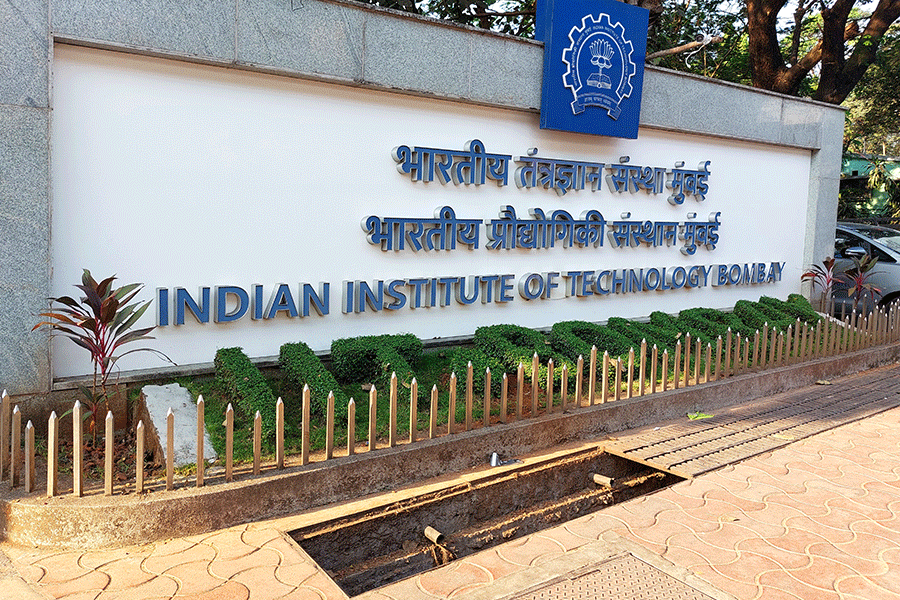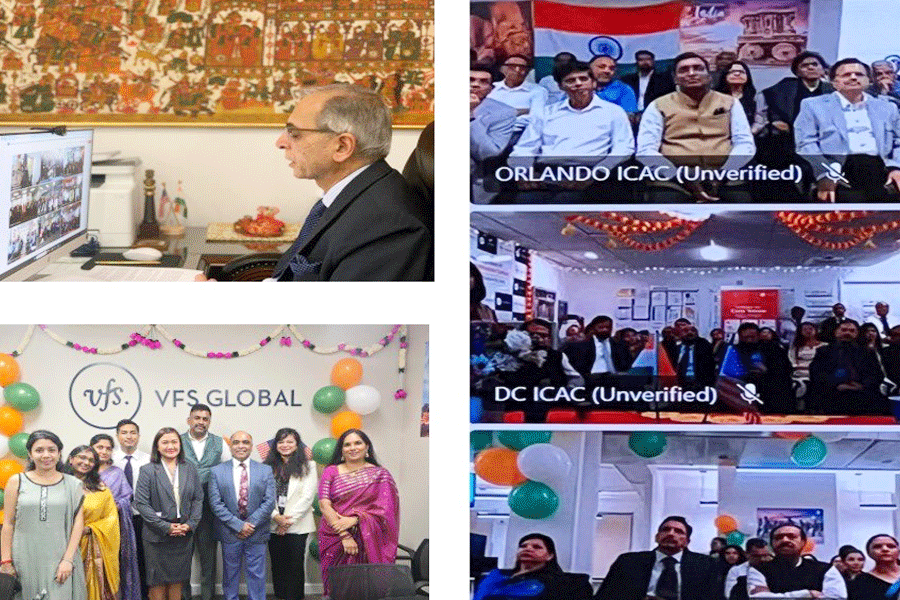In the present popular perception of Sanskrit, it is best known as the language of religion and philosophy. In most cases, it first brings to mind the Vedas and the Upanishads, the Bhagavadgita and other sacred works like the famous epics. The scriptural dimension is important. But it has largely relegated other aspects of this magnificent language into the shadows.
Both the causes and effects of this situation deserve notice. Sanskrit has a tradition of usage for at least 3,000 years stretching into present times. As the common language of India's cultural growth and the principal vehicle of its thought for much of this period, it has a unique position in national identity.
When modern Sanskrit studies commenced at the end of the 18th century, they soon found a sceptical focus in history, linguistics, religion and philosophy. Colonial scholarship sought to learn about India's past through its ancient language. Representing a new ruling class, it was interested to know more about the origins and evolution of Indian civilization, the nature of its institutions and, increasingly, about its religious and philosophical beliefs and concepts.
Indian scholars versed in Western learning also contributed to the growth of what is now called Indology. This discipline concentrated in the beginning on Vedic studies and the scrutiny of other religious and philosophical texts. A good example of its initial thrust is provided by the early translations from Sanskrit into English.
The first such translation was that of the Bhagavadgita by Charles Wilkins, published in 1784 with an introduction by the then governor general, Warren Hastings. The first Indian to translate from Sanskrit into English was Raja Rammohun Roy, whose rendition of the Isa Upanishad appeared in 1816. These pioneering ventures seem to have had a lasting impact. Sacred texts have continued to dominate Sanskrit studies and translations to this day.
Secular works were also translated from the beginning. The rendering of Kalidasa's Shakuntala in 1789 by William Jones, the founder of Calcutta's Asiatic Society, was the first to stimulate Western interest in the beauties of Sanskrit literature. But such works were comparatively few. The course of future research was set by erudite enterprises like the 50 volume Sacred Books of the East translations, edited over a quarter century period by Max Müeller. The result has been that, in contrast to extensively researched and translated works like the Bhagavadgita and the Upanishads, relatively little of the purely poetical or technical literature of Sanskrit is well known or readily available in English and other translations today.
If the growth of its modern study established the sacred aspects of Sanskrit at the centrestage of popular perception, so did the decline of its traditional learning. Deprived of the opportunities for social and economic advancement available to adepts in official languages like Persian and later English, practitioners of Sanskrit were confined to the religious domain. Gradually, the public use of the language became associated mainly with rituals of worship and various sacramental ceremonies.
The predominant association of Sanskrit with recondite scholarship on the one hand, and with pujas and pundits on the other, has tended to isolate it from a wider audience in the country. This includes those unable to identify with its sacerdotal or metaphysical aspects as well as those who consider them irrelevant to modern needs. The one may find the language and literature sectarian, the other obscurantist. Both perceptions are at best partial if not erroneous, for they ignore the full gamut of the language.
Like any other great classical languages of world literature, Sanskrit too has its full share of fine poetry, drama and prose about the human condition. It is replete with inspirational and creative, narrative, descriptive and gnomic expressions of high literary value. Examples of these, often of surpassing excellence, are also found in scriptural works. But they abound equally in other parts of Sanskrit literature. Their appeal, as in the case of other great languages, is universal and timeless. Better knowledge of this aspect of Sanskrit could help to clarify the prevailing impressions about it.
The classical literature of Sanskrit, wrote the late Harvard scholar, Daniel Ingalls, 'has remained to the English reader, like the Sleeping Beauty of the fairy tale, hidden behind a hedge of thorns'. The comment applies no less to present day English readers in India. Unlike earlier generations, most of them have little or no access to the literature in the original.
In some respects English occupies in today's India a position similar to that of Sanskrit in ancient times. It is the language of academic thought and higher learning, and of elite intercourse across regional divides. Its place in popular culture is on the increase. If the richesse of Sanskrit as a whole are to reach the modern Indian, it can most practically be done through translations into English and the regional languages.
Can the splendours of Sanskrit be translated effectively into as dissimilar a language as English? Literal translations convey content but not character, and are often hard to read. Literary translation faces transcultural difficulties, compounded by differences of linguistic construction and idiomatic usage. Some colonial scholars contended that Sanskrit poetry was essentially untranslatable. Such assertions have been disproved by the work of Sanskritists like A.W. Ryder and D.H.H. Ingalls, John Brough and Barbara Miller. However, Sanskrit poetry has still to find interpreters comparable to Ezra Pound from classical Chinese or Gertrude Bell from Persian.
In India, Aurobindo Ghose's English renditions of Kalidasa's Urvashi and Bhartrihari's epigrams are brilliant examples of the translator's art. The few available translations by Vivekananda captured both the poetic and the devotional spirit of Vedic hymns. Romesh Dutt's verse renderings from the Ramayana and the Mahabharata enjoyed wide popularity in their time, being lauded, among others, by the Chinese philosopher, Lin Yutang.
Good translations from the full range of Sanskrit literature are nevertheless still too few. Most of the satirical and comic verse, for example, and much of the epigrammatic poetry collected in medieval anthologies, has not been translated at all. The position is largely similar with respect to Sanskrit fiction, drama and other literary works meant pri-
marily to entertain rather than to teach or edify.
The principal cause of this lacuna is lack of knowledge. The vast and varied range of Sanskrit writing is little known. Even in India few have any idea of the full extent and content of this heritage. To provide information and arouse interest remains a formidable challenge, probably beyond the capacities of official endeavour.
Given the country's present cultural dynamics, one hope of change may lie in the operation of the pizza syndrome. A century ago Kalidasa was rediscovered by the new Indian middle class when the Oxford professor, Monier Williams, hailed him as the William Shakespeare of India. Western universities now have greater resources and keener interest, to which their increasing Indian faculty members also contribute. In some of them Sanskrit studies are picking up, also throwing fresh light on the still comparatively shrouded secular face of Sanskrit. Research and translations emanating from these institutions can be expected to animate a corresponding interest and greater awareness in India in coming years.
The author has published translations of Sanskrit works like Hitopadesa and Simhasana Dvatrimsika. His most recent work is a translation of Shuka Saptati
 Saturday, 02 August 2025
Saturday, 02 August 2025









